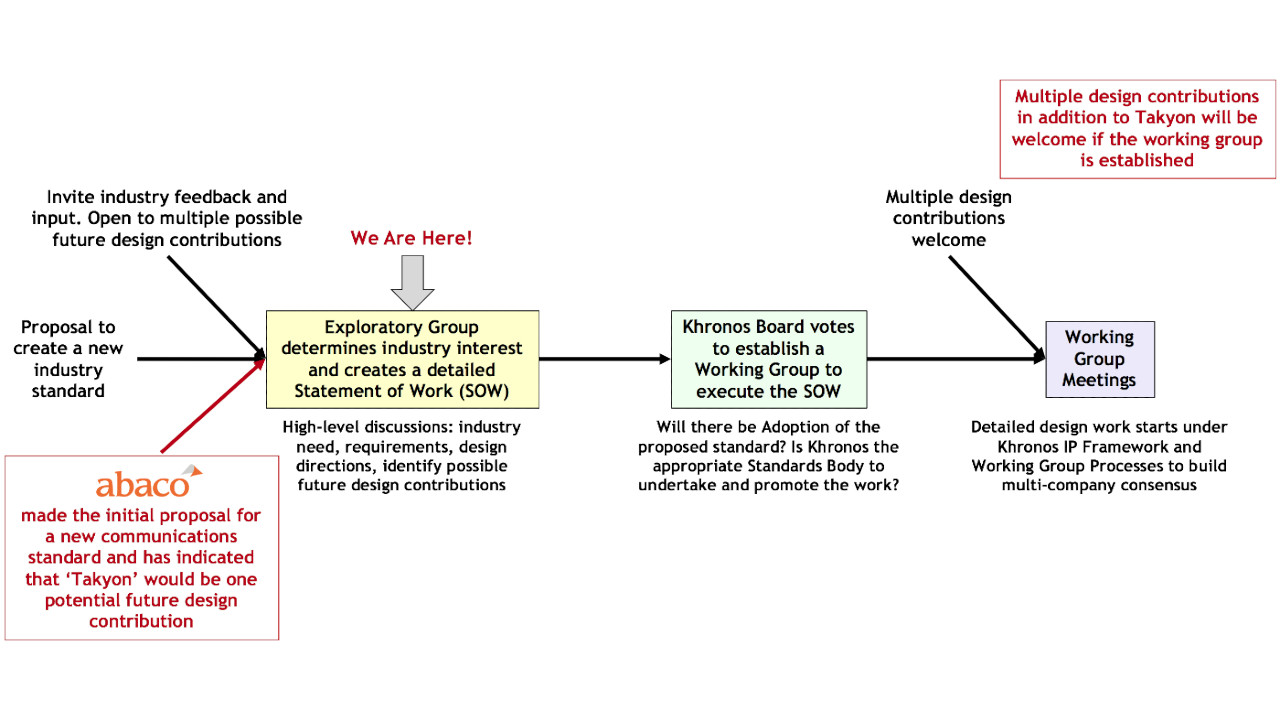The Khronos Group, best known for its work on the OpenGL and OpenCL graphics and compute language standards, has called for feedback on the potential formation of a working group targeting a new low-level, heterogeneous communications standard for high-performance embedded computing (HPEC).
Targeting markets ranging from the Internet of Things (IoT) to aerospace, industrial, scientific, and medical (ISM), and robotics, the Khronos Group proposes to create an open standard for “markets that wish to focus on algorithm development – not communication intricacies – but need the performance and flexibility of low-level point-to-point protocols with the simplicity of high-level point-to-point methodologies” and with a goal to “unify low-level communication into a simple API with the aim of reducing application complexity, minimising development costs, and accelerating time-to-market.”
Already, the Group has received a design proposal for just such a standard, from Abaco Systems and called the Takyon API. This programming interface, the Group explains, offers just five core functions but brings together low-level point-to-point communication and signalling functionality, with the promise of supporting rapid development of high-performance, scalable, portable, and fault-tolerant applications.
“Khronos has created a methodical exploratory process to enable us to take well-formed proposals for new open standards and evaluate industry interest before we create a working group to develop the standard itself. This process allows us to focus the resources of our members, and of the industry, on efforts that stand an excellent chance of being widely-adopted and having a positive market impact,” explains Neil Trevett, Khronos president, of his organisations call for comments. “We thank Abaco for initiating this investigation, and we look forward to engaging with the embedded industry to gauge the interest in evolving this potential new open standard.”
“Current HPEC communication APIs are typically focused on a particular hardware interconnect/architecture, or a specific thread/process/processor/application locality. Some are very complex, requiring hundreds of lines of code just to handle simple concepts. Others intend to be simple, but get deceptively complex in real-world use cases. Still others mask important, underlying features which can ultimately impact latency and determinism,” claims Peter Thompson, vice president of product marketing at Abaco. “There is no single standard that fits all localities and features – resulting in high development costs, ill-fated shortcuts, and confused embedded HPEC developers. We believe that this effort by Khronos has the potential to address this problem with a simple but elegant API that could become a key open standard.”
More information on Takyon, including an open-source implementation, and the link to provide the Khronos Group with feedback is available on the official website.
